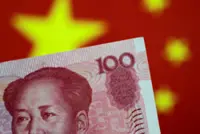Brisk business: Shoppers browse merchandise in a mall on Orchard Road. The Singapore dollar benefitted from policy tightening by the monetary authority, which re-centred the midpoint of its exchange rate band higher three times in 2022 to fight inflation. — Reuters
SINGAPORE: The race to be South-East Asia’s best-performing currency in 2023 looks like being between the Thai baht and Singapore dollar.
The baht is set to be powered by an influx in Chinese tourists after the mainland rescinded most of its Covid controls over the past month, paving the way for a recovery in outbound travel.
Already a subscriber? Log in
Save 30% OFF The Star Digital Access
Cancel anytime. Ad-free. Unlimited access with perks.





